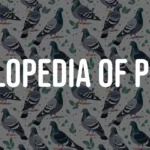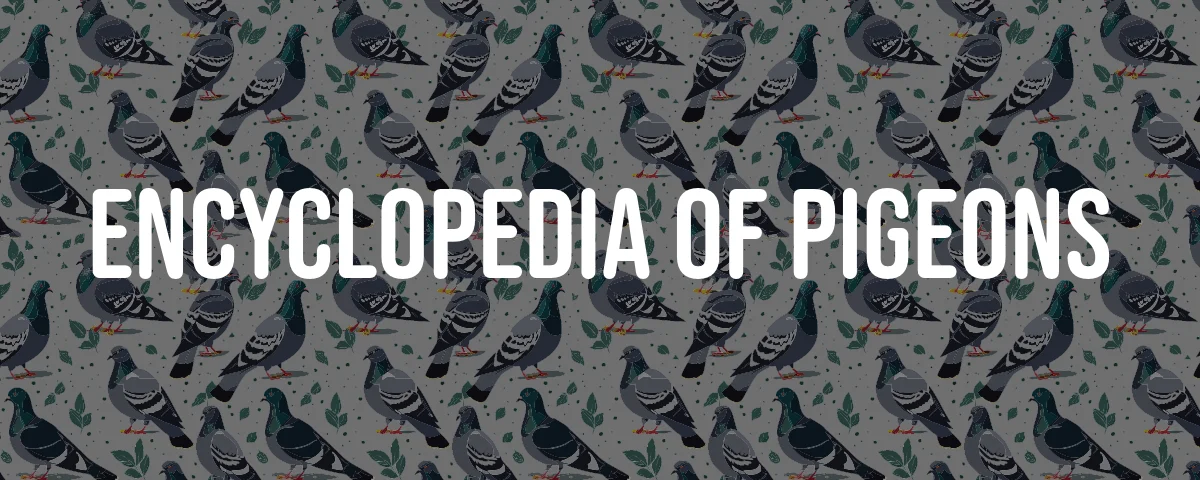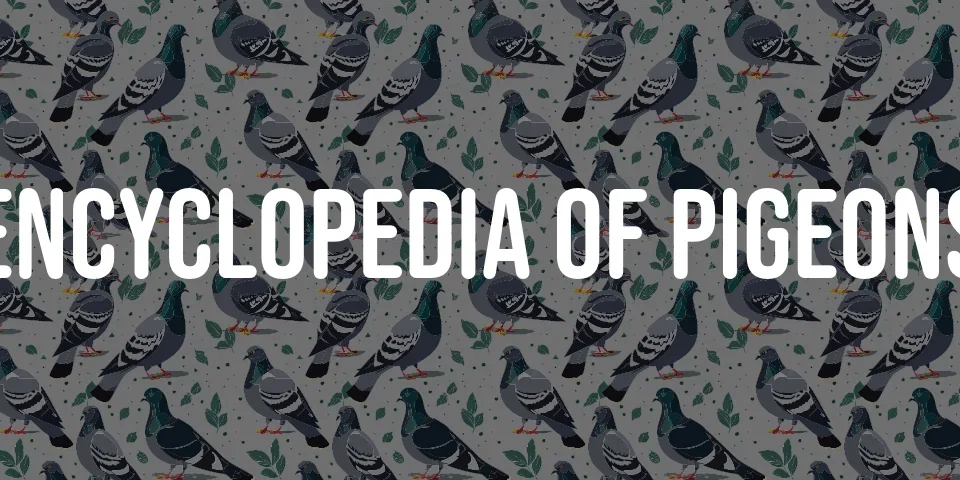Introduction to Clean-legged Full-head Swallow Pigeon
Picture the kind of bird you’d expect to find perched atop a centuries-old German rooftop, surveying the world below with the measured poise of a seasoned aristocrat. That’s the Clean-legged Full-head Swallow pigeon—often referred to as the Thuringer Swallow—an absolute classic among fancy pigeon breeds. Born and bred in Thuringia, Germany (where forests seem to whisper their old tales), this pigeon radiates a refinement that’s hard to overlook.
Let’s get the essentials out of the way: legs as smooth as a ballroom floor—no feathers, not even a hint; a head profile that’s all drama and distinction; and, for those familiar with pigeon genealogy, characteristics that echo throughout the Thuringer Wing Pigeons and Spot Swallows. But this breed isn’t just about appearances. The Clean-legged Full-head Swallow stands—quite literally—with a posture that exudes both strength and elegance, almost as if it knows it’s the star of the show.
Anyone who collects or breeds ornamental pigeons will tell you: this bird is more than just a feathered beauty. Its presence is a tribute to the rich tradition of German pigeon breeding—a blend of artistry, history, and a stubborn pursuit of perfection. When you see one, you realize these birds are more than pets—they’re living heirlooms.
Origin and Naming: Thuringer Swallow
Now, about that name—Thuringer Swallow. There’s no mystery here: it’s a straightforward badge of honor, referencing the pigeon’s birthplace. The Thuringia region, a patchwork of forests and historic towns in the heart of Germany, lends its name to this breed like a surname passed down through generations.
It belongs to a close-knit family of Swallows, including the Thuringer Wing Pigeons—sometimes called Spot Swallows among pigeon enthusiasts. The name serves as both a map and a mirror: showing where it comes from, and what sets it apart.
Distinctive Features and Appearance
If you’re picturing a scruffy street pigeon, think again—this is the James Bond of the dovecote. The Clean-legged Full-head Swallow boasts a physique that’s both robust and streamlined, with a stance that leans toward horizontal, as though always ready for a photo op.
The head is the showpiece: long, arched, and crowned by a pronounced forehead. Sometimes it’s sleek and smooth, sometimes topped with a crest for extra flair—imagine a feathered beret.
And those legs: medium in length, bare as a marble statue, lending a minimalist elegance. But truly, it’s the plumage that steals the spotlight. Each bird displays a unique suit of colors and patterns, making them the avian equivalent of haute couture models—no two ever quite the same. Collectors swoon over their variety, and it’s easy to see why.
Physical Characteristics
Not all pigeons are created equal—some are simply born to dazzle. The Clean-legged Full-head Swallow strikes a balance between athleticism and aristocracy. The neck isn’t long enough to look awkward, nor is it stubby. The chest? Broad enough to suggest hidden strength, but never overdone.
Resting atop all this, the head sits like a crown jewel. Crest or not, it’s unmistakable. As for the legs, the name says it all—bare, polished, and undeniably regal. The feathers are like finely tailored garments: long, perfectly aligned, and smooth as silk. This is an ornamental breed, yes, but there’s practicality in its perfection—a pigeon built for the show circuit and for the admiration of anyone with an eye for beauty.
- feathers that could be mistaken for silk scarves in a Paris boutique,
- plumage so flawless you’ll want to run your fingers through it (though the pigeon may object),
- an air of poise that makes other pigeons look like they’re slouching.
Head Features: Smooth or Crested
Here’s where things really get interesting: the head comes in two distinct styles. The smooth-headed variant is all about streamlined elegance—think minimalist chic. The crested variety, by contrast, embraces maximalism, with a rounded shell crest and rosettes on either side, like feathered earrings.
And then the eyes—dark, smoldering, and expressive enough to make you wonder if pigeons have secrets of their own. The beak? Medium in length, with a subtle color shift that always complements whatever feather pattern the bird is wearing.
Leg and Feather Description
No need to look twice: those legs are as clean as a freshly waxed dance floor—no feathers, no fuss. Medium in length, they convey tidiness and efficiency. Not a stray plume in sight, which perfectly fits the breed’s reputation for polish and neatness.
For feather connoisseurs, these birds deliver in spades: long, sturdy, and arranged with a precision that would make any Swiss watchmaker envious. Every plume sits exactly where it should, contributing to the overall effect—a bird that looks as if it spent the morning at a feather salon.
Color Patterns and Variations
This is where things turn positively psychedelic. The Clean-legged Full-head Swallow struts in all sorts of hues—black, red, yellow, blue, silver. But it doesn’t stop at color. The true magic lies in the patterns: barless, checkered, spangled—each like a unique brushstroke on a living canvas.
These markings aren’t just decorative—they’re a point of pride for breeders and a delight for anyone with an eye for variety. It’s the avian equivalent of rare vinyl records: everyone wants to find a new pattern no one else has seen.
Breeding and Genetics
Breeding these birds isn’t about rolling the genetic dice—it’s more like playing a high-stakes game of chess. Every pairing is a calculated move to preserve the signature look: smooth legs, bold full head, and vibrant plumage. Breeders are both artists and scientists, poring over lineages and genetic charts late into the night.
Genetics isn’t just a buzzword here—it’s the backbone of the breed. By delving into inherited traits, breeders can predict which pairings will yield the perfect color splash or the most balanced structure. The aim? Offspring that meet the high standards of both beauty and function.
With modern genetic tools, breeders have become even more precise in their approach. DNA analysis now helps select mates that will pass on the best features while quietly sidelining less desirable ones. The result: a breed that maintains its classic charm while staying robust and diverse.
Pigeon Genetics and Breeding Standards
Breeding pigeons is anything but casual. The Clean-legged Full-head Swallow is the product of meticulous genetic planning. Breeders are on a constant quest to perfect those smooth legs, the trademark round head, and the stunning plumage.
Selective breeding is an art form. By analyzing genetic markers, breeders can forecast the odds of producing a rare color or a particularly striking pattern. It’s a never-ending balancing act between tradition and innovation, aesthetics and health.
Recent advances have brought genetic testing into the mix, allowing breeders to favor desirable traits while minimizing health risks. It’s a scientific approach to an old-world craft, ensuring each new generation can shine at shows and preserve the breed’s legacy.
Scientific Breeding Techniques
Planning a pigeon family tree combines detective work, matchmaking, and a hint of luck. Breeders scrutinize lineage charts, focus on the smallest details, and monitor health with unwavering attention. They’re not just seeking a pretty feather—they want birds with style, stamina, and a presence that commands attention.
Genetic analysis is their ace in the hole. By predicting how traits will combine, breeders can favor birds with the most striking colors, optimal feather structure, and symmetry that would impress any mathematician. The best part? This high-tech approach helps reduce unwanted quirks and keeps the gene pool vibrant.
Care and Management
Let’s be honest: raising Clean-legged Full-head Swallow pigeons isn’t for the faint-hearted or the idle. These birds demand more than a random handful of seed and a wire cage in the corner. A clean, spacious loft is the bare minimum for them to thrive. Think of it as their penthouse suite—clutter and filth simply won’t do.
Regular cleaning isn’t a chore; it’s a ritual. Scoop out droppings, sweep away loose feathers, and keep the air fresh. Disease doesn’t stand a chance in a well-kept aviary. As for food, these pigeons are grain connoisseurs—offer a mix of grains, seeds, and legumes, add some grit for digestive health, and ensure fresh water is always available (water bottles, not martinis).
These birds are social creatures—definitely not loners. They need interaction, ideally in pairs or small flocks, where they can coo, preen, and generally behave like the socialites they are. Routine health checks are essential. A sudden drop in weight or a ruffled feather could be the first sign of trouble—catch it early, and you’ll spare yourself and your bird a world of worry. Vaccinations? Absolutely. It’s far better than playing pigeon roulette with their health.
Exercise isn’t optional. A cramped cage is a crime; a spacious aviary with perches and places to explore is paradise. Give them a reason to stretch those wings.
Pigeon Care and Management Practices
If you see pigeon care as a simple checklist, you’re missing the essence. It’s about noticing the little things—how they move, interact, and whether their eyes have that familiar spark. Cleanliness is your first line of defense against illness, so keep the loft spotless. It’s not glamorous, but it works.
Space is sanity for these birds. Cramped quarters breed stress, and stress brings problems. Give them room, let them mingle, and keep their environment stimulating. Perches aren’t just for show—they’re essential for mental well-being.
When it comes to health, think like a detective. Watch for weight changes, dull feathers, or odd behavior—they’re clues, not annoyances. Vaccinations and a top-notch diet complete the essentials.
Dietary Needs: Pigeon Food
You wouldn’t feed a racehorse fast food, so don’t give your Clean-legged Full-head Swallow just any grain. Their diet is carefully curated: premium grains (think wheat, barley, corn), a mix of seeds, and, for the modern pigeon, specially formulated pellets. Sunflower seeds or millet can be added for a bit of culinary variety.
Water is non-negotiable: fresh, clean, and always available. Occasionally, a sprinkle of vitamins or minerals can round out their nutrition, and don’t forget the grit—it’s essential for healthy digestion.
Feeding isn’t just a daily routine; it’s a ritual that shapes their health, their feathers, and their mood. Overfeed, and they’ll loaf around; underfeed, and their plumage will lose its luster.
- premium grains such as wheat, barley, and corn,
- mixes of seeds and formulated pellets,
- occasional sunflower seeds or millet for variety,
- fresh water and grit for digestion,
- supplemental vitamins or minerals as needed.
Common Pigeon Diseases and Prevention
Now, let’s talk about what can go wrong. Respiratory infections, parasites, digestive issues—these are the usual culprits. Ignore them, and you’ll have sickly birds and plenty of regret.
The solution? Keep the loft cleaner than your kitchen. Good ventilation is crucial. Parasites like mites and lice pose a constant threat, so check regularly and use pigeon-friendly treatments if you spot any trouble. Diet matters—spoiled food leads to digestive disasters, so keep it fresh.
And don’t try to play vet unless you truly know what you’re doing—bring in a professional for regular checkups. Vaccinations aren’t just for show; they’re your best insurance policy.
- maintain excellent loft hygiene,
- ensure proper ventilation,
- check for and treat parasites regularly,
- avoid spoiled food,
- schedule professional health checks and vaccinations.
Evaluating and Showing
Showing these pigeons is part art, part science, and a touch of theater. Judges aren’t looking for a pretty face alone—they want the total package: a balanced body, a stance that’s both natural and proud, legs that are smooth and feather-free, and, of course, that signature head.
Markings are the final flourish. Judges scrutinize every stripe and spot—are they sharp? Are they symmetrical? Is the color vivid or faded? Even a minor flaw can drop a bird in the rankings, so grooming before a show is as essential as a tuxedo at a gala.
Judging Criteria: Overall Impression and Markings
When a Clean-legged Full-head Swallow steps into the spotlight, judges focus on its shape and symmetry. The head must be full and proud, the legs bare and elegant. Every feather counts, every marking is examined. Patterns—barless, checkered, spangled—should be crisp and clear. A smudged line or dull color? That’s a mark against.
Grooming is more than vanity—it’s often the difference between the winner’s circle and the also-rans.
Participation in Shows and Competitions
Competing isn’t only about having the prettiest bird. You’ll need to register with pigeon clubs, fill out forms, pay fees, and learn the ropes. The standards are strict: smooth legs, full head, patterns that look artistically placed.
Preparation is everything. Groom, clean, and present your bird at its absolute best. Clubs offer more than gatekeeping—they’re support networks, places to trade secrets, and, at times, to commiserate over a close loss.
Related Pigeon Breeds and Varieties
The Clean-legged Full-head Swallow isn’t alone in the pigeon world. Its relatives—the Thuringer Wing Pigeons and Spot Swallows—share the same family tree but display their feathers differently. While the Thuringer Wing is all about bold wing patterns, the Clean-legged Full-head Swallow keeps things sleek and minimal. Spot Swallows flaunt dramatic head markings, while our subject exemplifies pure, seamless elegance.
It’s a reminder that in the world of pigeons, family resemblances are subtle, and every breed has its own way of standing out.
Comparison with Thuringer Wing Pigeons and Spot Swallows
Here’s the breakdown: the Clean-legged Full-head Swallow is instantly recognizable by its bare legs and dramatic full-headed appearance—especially when a cap marking adds that finishing touch. The Thuringer Wing Pigeon, meanwhile, is known for its showy wing patterns; the Spot Swallow stands out with bold wing spots. The Full-head Swallow combines symmetry and polish, as if made for the spotlight.
Together, these breeds create a portrait of diversity—each distinct, each a testament to the ingenuity and artistry of pigeon breeders everywhere. The Clean-legged Full-head Swallow’s charm? It lies in the details you can’t help but notice, even if you weren’t looking for them. And sometimes, that’s all the introduction a true original ever needs.





